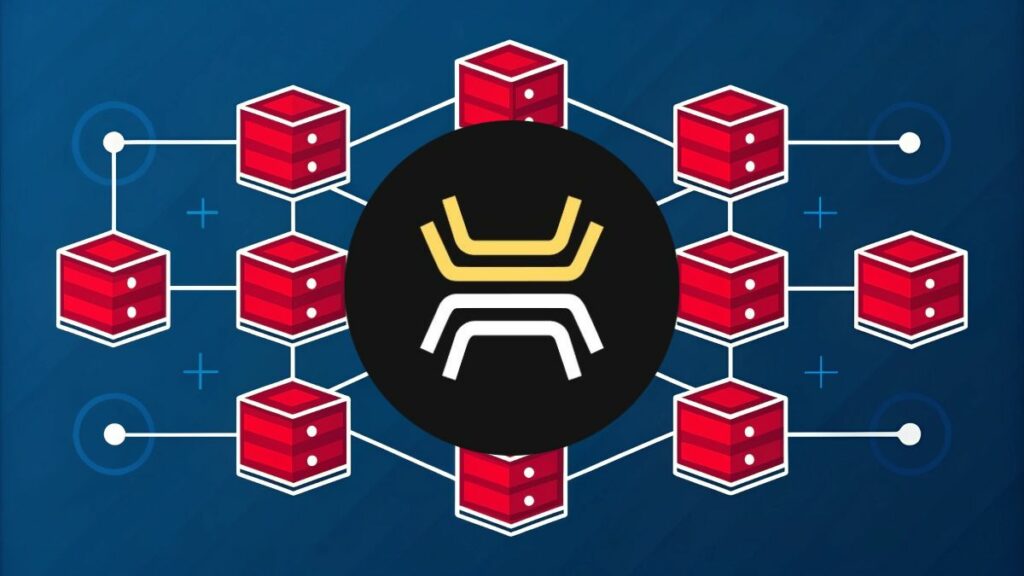Botanix represents a groundbreaking evolution for the Bitcoin ecosystem. As a native Layer 2 solution, it aims to unlock Bitcoin’s full potential beyond simple transactions. By seamlessly integrating smart contracts and decentralized applications, Botanix expands Bitcoin’s utility while preserving its core security and decentralization.
What is Botanix Blockchain?

Bitcoin’s First Decentralized Layer 2
Botanix is the first fully decentralized, Ethereum Virtual Machine-equivalent Layer 2 blockchain built natively on Bitcoin. It aims to transform Bitcoin from a store of value into a programmable foundation for dApps, smart contracts, and financial services, without compromising Bitcoin’s core principles of security, censorship resistance, and decentralization. By anchoring its operations to Bitcoin’s base layer, Botanix unlocks new utility for BTC while preserving its status as sound money.
EVM Compatibility for Bitcoin
The protocol integrates full EVM equivalence, allowing developers to deploy Ethereum-based dApps, tools, and smart contracts directly onto Bitcoin. This compatibility bridges the gap between Bitcoin’s robust security and Ethereum’s flexible development environment, enabling seamless migration of DeFi protocols, NFTs, and other applications to the Bitcoin ecosystem. Users interact with these dApps using synthetic Bitcoin without needing wrapped tokens or external blockchains.
Enabling a Bitcoin-Native Economy
The protocol facilitates a self-sustaining Bitcoin economy where BTC is the primary medium for transactions, staking, and yield generation. Users can engage in lending, borrowing, trading, and other DeFi activities natively on Bitcoin, eliminating the need to convert BTC to other assets.
Projects like the BTC-backed stablecoin Palladium, the DEX Bitzy, and the lending platform Spindle exemplify Botanix’s vision for a comprehensive financial layer powered exclusively by Bitcoin.
Decentralization and Security via Spiderchain
The blockchain leverages its innovative Spiderchain, a decentralized network of multisig wallets managed by independent operators, to secure BTC deposits and ensure trustless operations. This architecture distributes custody across dynamically randomized participants, preventing centralized control and mitigating single points of failure.
By inheriting Bitcoin’s Proof-of-Work finality and combining it with forward security mechanisms, Botanix fortifies user funds against attacks while scaling Bitcoin’s capabilities for mass adoption.
How Does Botanix Work?

Two-Way Peg Bridge for BTC Movement
Botanix facilitates seamless BTC transfers between Bitcoin’s base layer and its Layer 2 via a decentralized two-way peg bridge. Users secure their native BTC in multisig wallets on Bitcoin, which activates the creation of synthetic BTC on Botanix for use in transactions, staking, or DeFi activities.
Conversely, burning synthetic BTC unlocks the original BTC from the multisig vaults, ensuring trustless asset portability without intermediaries or wrapped tokens.
EVM Execution Environment
At its core, the protocol runs a full Ethereum Virtual Machine execution client, enabling Ethereum-equivalent smart contract functionality on Bitcoin. This environment supports Solidity-based dApps, tools like MetaMask, and seamless migration of DeFi protocols. In contrast to Bitcoin’s UTXO model, the blockchain uses Ethereum’s account-based system, handling transactions as balance changes to ensure compatibility with Ethereum’s development environment.
Orchestrator Nodes and PoS Consensus
Orchestrator nodes form the protocol’s operational backbone, managing block production, transaction validation, and multisig wallet security. These nodes stake native BTC as collateral to participate in the network, with block rewards paid in BTC. They are dynamically randomized for each new multisig wallet creation and penalized via slashing for malicious behavior, ensuring decentralized governance aligned with Bitcoin’s ethos.
Spiderchain Security Architecture
Security hinges on the Spiderchain, a self-updating web of multisig wallets distributed across Orchestrator nodes. Each Bitcoin block triggers a new multisig wallet managed by a random subset of nodes, while older wallets cryptographically “expire” using forward security. This design isolates past transactions from future key compromises, preventing theft of locked BTC even if attackers gain majority control.
Finality is inherited from Bitcoin’s Proof-of-Work, with Merkle root hashes of Botanix blocks inscribed on Bitcoin for immutable settlement.
Botanix Impact on the Bitcoin Network

Unlocking Programmable Utility
Botanix changes Bitcoin from being a simple store of value to a lively smart contract platform. By introducing Turing-complete programmability via its EVM layer, it enables DeFi, NFTs, and complex dApps to operate natively on Bitcoin. This breakthrough addresses Bitcoin’s inherent scripting limitations, attracting Ethereum developers and expanding Bitcoin’s use cases beyond simple transfers without altering its base-layer protocol or security guarantees.
Reinforcing Bitcoin’s Monetary Primacy
Unlike other L2 solutions that rely on wrapped assets or external tokens, the protocol exclusively uses Bitcoin for all network operations. Users transact, pay gas fees, and stake using synthetic BTC, ensuring Bitcoin remains the sole economic backbone. This design prevents fragmentation, deepens BTC’s liquidity, and amplifies its role as sound money within a thriving DeFi ecosystem anchored to Bitcoin’s scarcity.
Scaling Through Off-Chain Execution
The blockchain alleviates Bitcoin’s scalability constraints by processing thousands of transactions per second off-chain while periodically anchoring proofs to Bitcoin. This significantly lowers congestion on the mainnet and reduces transaction costs. By shifting computational overhead to its L2, the protocol preserves Bitcoin’s lean base layer while enabling high-frequency activities like microtransactions and DEX trading, previously impractical on native Bitcoin.
Enhancing Security and Decentralization
The Spiderchain architecture extends Bitcoin’s security model by distributing BTC custody across randomized, slashing-protected Orchestrator nodes. This creates a trust-minimized bridge that eliminates single points of failure and reduces attack vectors compared to centralized custodians.
By inheriting Bitcoin’s Proof-of-Work finality and enabling permissionless node participation, Botanix strengthens network resilience while upholding Bitcoin’s core ethos of decentralization.
Pros and Cons of Botanix

-
Pros
The protocol unlocks Ethereum-like programmability on Bitcoin via EVM equivalence, enabling DeFi, NFTs, and dApps without compromising Bitcoin’s security. It uses native BTC for all operations, staking, fees, and transactions, eliminating wrapped token risks. The decentralized Spiderchain architecture enhances security through randomized multisig custody and slashing. Off-chain execution scales Bitcoin sustainably, reducing congestion and fees.
-
Cons
Complexity arises from Spiderchain’s novel multisig mechanics and forward security, potentially confusing users. Reliance on Orchestrator node incentives poses coordination challenges if staking participation fluctuates. EVM compatibility inherits Ethereum’s smart contract vulnerabilities, requiring rigorous audits. Bitcoin’s slower transaction finality may delay bridge operations during peak network congestion.
Conclusion
Botanix fundamentally transforms Bitcoin from a passive store-of-value to a programmable powerhouse, enabling DeFi, dApps, and scalable transactions while preserving Bitcoin’s security and decentralization. Its EVM compatibility and BTC-native economy bridge innovation with integrity.










